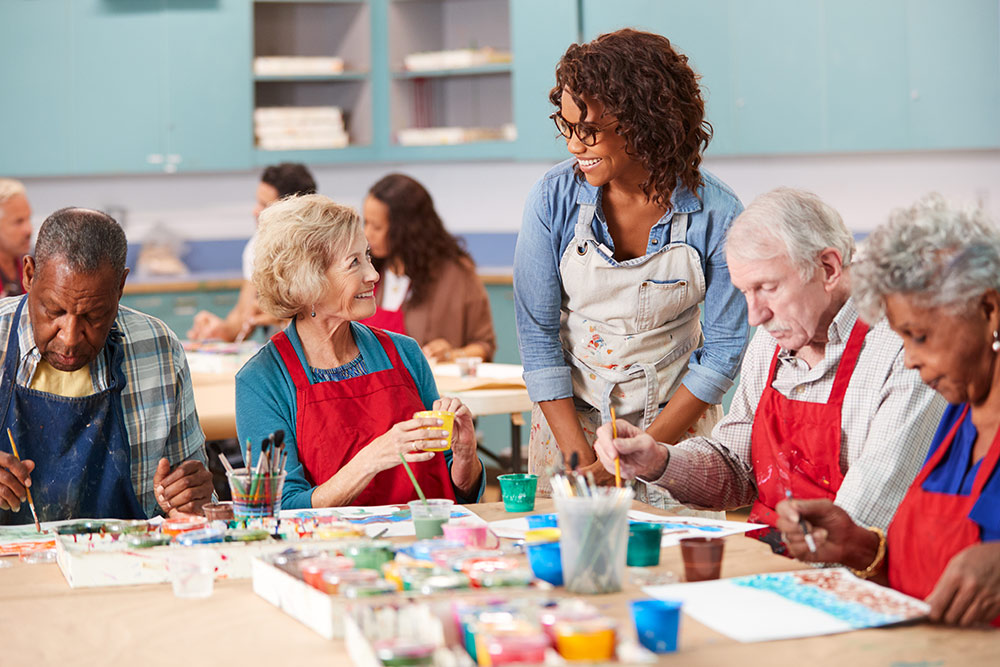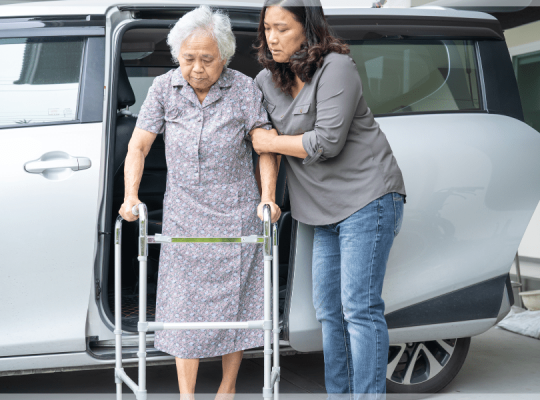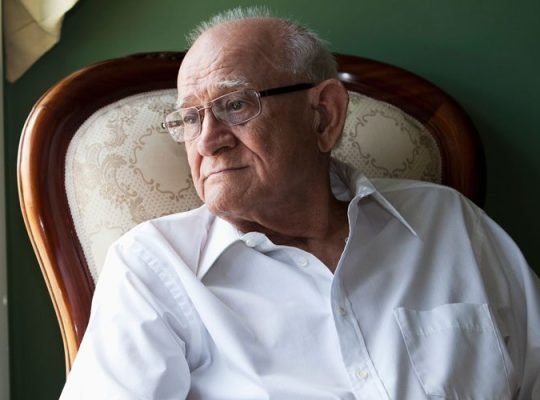It’s no secret that we are living longer and engaging in new and different activities as adults. A longer life raises the question: what can we do to age well? Keeping our health in check, good nutrition, physical activity and regular check-ups is usually the right answer. But it is also important to consider other seemingly insignificant activities that can be beneficial to the health of older people.
While prolonged old age, or the so-called “golden years,” can be a blessing, challenges include declining health, social isolation, loss of loved ones, and life transitions.
Fortunately, research shows that art therapies can help (in some cases, as much as traditional Western medicine). In particular, there is substantial evidence that participatory arts activities help maintain health and quality of life in older adults. These benefits, detailed below, include improved cognitive and tactile abilities, subjective well-being, and reduced risk of dementia.
Arts activities that have been the focus of most research and are recommended for older adults include:
- Singing, either individually or in participatory choirs, as a means of improving mental health and subjective well-being (i.e., perceived quality of life).
- Dance classes, as they enhance cognition and motor skills, and even decrease the likelihood of developing dementia later in life.
- Playing a musical instrument has countless positive effects, including reducing the risk of dementia.
- Visual arts, such as painting and sculpture, which lead to increased social engagement, psychological health and self-esteem.
- Fictional or biographical writing, as it develops memory, mental function and self-esteem.
A better understanding of the relationship between the arts and aging can help identify areas for improvement in future wellness research, as well as opportunities to invest in the quality of life of older adults.
Benefits of Art for Seniors
Improves Emotional Well-Being
There are many studies on how art, especially art that is more participatory or includes multiple people, improves self-esteem, increases satisfaction with accomplishments, and helps overcome periods of personal loss. In particular, making art in the classroom or in group activities, such as performances or theatrical, choral, or artistic presentations, reduces anxiety, lifts our spirits, and makes us feel socially included.
Gives Life a Purpose
Giving meaning to life is important for older adults, especially if they have spent most of their younger years defined by a career or raising children and managing a home. Once these responsibilities are gone, older adults can sometimes develop uncertainty about their purpose in life. Creative activities, such as writing, painting or knitting, promote a sense of competence, purpose and growth, all of which contribute to aging. When artistic creations can be presented, displayed or given away, this sense of purpose in life is enhanced.
Improves and Maintains Mental Abilities, Including Memory
For older adults, with or without mental impairment (Alzheimer’s or dementia), among the benefits of art stands out the participatory modality, which can help improve cognitive functioning, communication, reasoning skills, memory and creative thinking. We know that our brain can learn new disciplines at any age. This is due to the amazing ability of neurons to establish new pathways or routes through which to carry information. Once we have created this “pathway”, we have learned something new. Keeping these pathways active ensures good brain health.
Some artistic expressions are excellent memory exercises, such as singing, dancing and playing an instrument. Other forms, such as painting and sculpting, involve using very complex brain processes to interpret what we see and put it on a canvas or clay. Or to create something that we imagine. Color, brightness, space management, and perspective require very intense brain activity from the most advanced areas of the brain, so the more we use them, the more we keep our minds well exercised and in shape.
Improves Fine Motor Skills
Learning to hold and manipulate a paintbrush, pencil, musical instrument, or any other small tool used in art making helps regulate hand movements and stimulate brain connections while developing a skill. For older adults, painting helps them strengthen their fine motor skills. Hand-eye coordination helps synchronize eye and hand movements when performing manual activities that require visual attention.
Finally, creating, exhibiting or viewing a work of art is fun, even more so when shared with peers. And beyond the benefits of art, from a therapeutic point of view, there is nothing better than a little pleasure to feel good.






